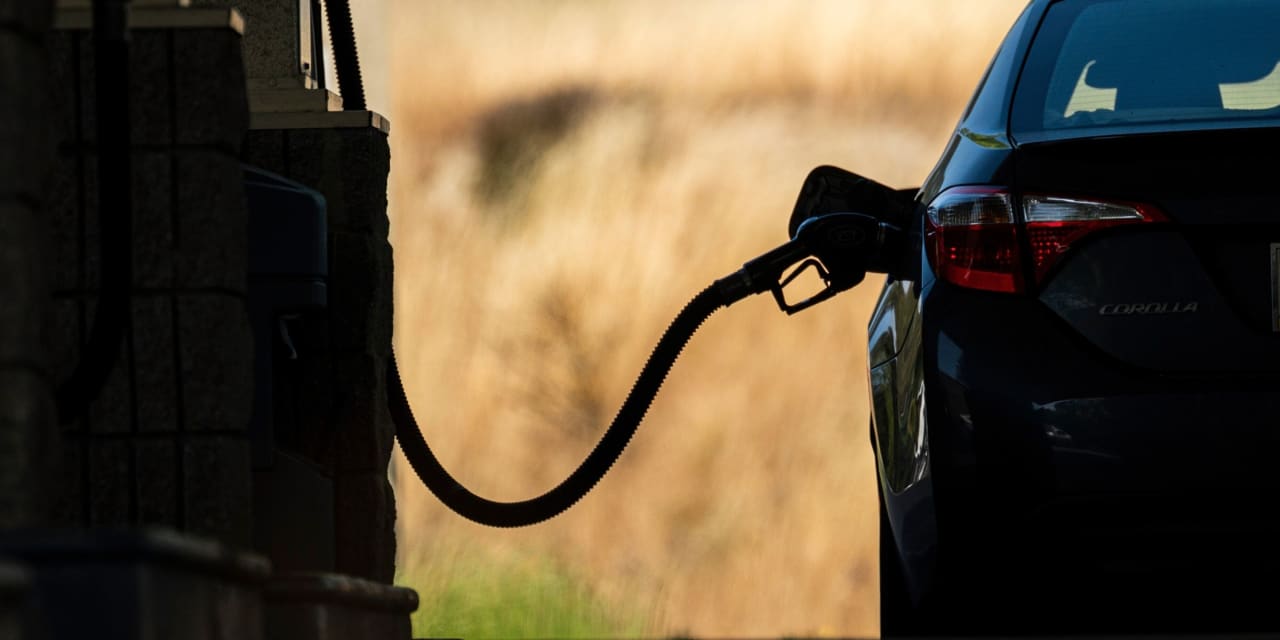Falling
gasoline
prices have helped rein in inflation in the past couple of months, leaving more money in the pockets of Americans, but investors shouldn’t count on that continuing for long.
The October consumer price index, released on Tuesday, showed that gasoline fell 5% on a seasonally adjusted basis from September levels. On an annual basis, gasoline prices were down 5.3%. That helped cool inflation to a 3.2% annual rate, down from 3.7% the month before.
Investors should expect another drop in gasoline prices once the November numbers come out next month. But the cost of the fuel may not be quite as big a drag on the price index in the following months, for several reasons.
Tom Kloza, global head of energy analysis at OPIS, says determining the future path of gasoline prices is a tough call. Demand for gas has been weak lately, and is likely to stay that way through the end of the year, potentially leading to lower prices. But gasoline prices tend to hit bottom around this time of year and can rise significantly once demand snaps back.
Gasoline has been headed down in a straight line for several weeks, dropping to its lowest level in nine months. The average price of a gallon at the pump is now $3.35, down 7% in the past month, according to AAA. Compared with a year ago, Americans are spending $165 million less on gasoline a day, according to Patrick De Haan, head of petroleum analysis at GasBuddy. In 12 states, average prices have dropped below $3 per gallon.
There are several factors that influence the price of gas. The first is the price of oil, which has been declining in response to concerns about demand. Brent crude, the international benchmark, is down 5% this month.
A second element is how profitable it is to refine that oil into products like gasoline. Overproduction of gasoline by refiners has been the biggest factor causing prices to fall over the past couple of months. As prices have come down, the margins that refiners had been making on gasoline narrowed to less than $10 per barrel last month from over $30 a year ago.
Refineries have slowed operations in recent weeks. They tend to perform maintenance in the fall after the busy summer driving season, so capacity always drops.
But this year, the rebound from maintenance has been slow. Last year, global refineries were operating at 90.6% of their capacity. This year, they are operating at 85.4%, the lowest level since January. The less gasoline they pump out, the more likely that prices will rise as demand starts to catch up to supply. Wholesale gasoline prices have been rising over the past few days. They are up 5% in the past three days and are up 0.6% for the month.
What is more, the monthly declines in gasoline prices are slowing, meaning the overall deflationary impact may be less significant in the coming weeks. During October, prices at the pump fell 9%, but they are down 7% over the past month.
And once December rolls around, it will be harder to post sharp annual price declines on a year-over-year basis. In December 2022, gasoline prices fell 13% to $3.32 per gallon.
There’s a good chance that gasoline prices stay around these levels or lower for the next few weeks. But the rapid decline may be over for now.
Write to Avi Salzman at [email protected]
Read the full article here


